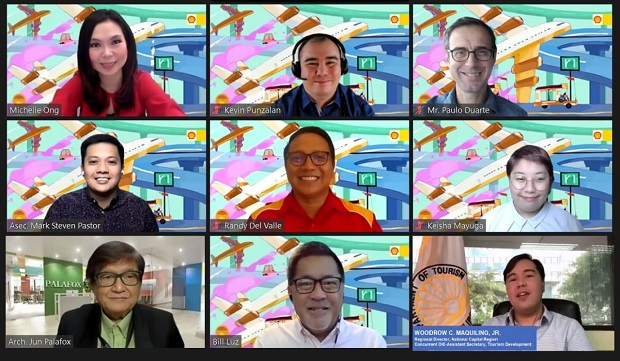Oil company Shell said it is ready and willing to put charging systems in its gas stations in the Philippines as a way to accelerate the adoption of electric vehicles in the country.

A top company official made the declaration during a forum called Future Festival, a four-part series launched by the Pilipinas Shell Petroleum Corporation (PSPC) to tackle pillars critical to the nation’s progress.
PSPC vice president and general manager for mobility Randy del Valle said his company is eager to power electric vehicles of the future through effective charging stations. “We are ready. Shell has been doing this globally. We have the capabilities and expertise,” Del Valle said. However, he also said that “we need to collaborate for a sustainable way to achieve this and source power sustainably.”
Del Valle said that there must be a radical transformation in the public mindset with regard to mobility. “It is not just about transportation. It is enabling efficient transactions to make needed products and quality services easily accessible and readily available to everyone on the move, whether it’s traffic, urbanization, the need for safer roads and public transportation, or the long-standing effects of the pandemic — we need many solutions, not just one.”
Resource persons said during the forum that sustainability through technology and participation in the national energy transition are essential as the country moves forward. By 2040, there will be an estimated 300-400 million electric vehicles (EVs) on the road, according to the International Energy Agency.
Department of Transportation (DOTr) assistant secretary Mark Steven Pastor said that the DOTr’s Public Utility Vehicle Modernization Program (PUVMP) can pave the way for EVs as public transport.
Noting that bicycles became a popular alternative mode of transportation during the pandemic, Pastor said the DOTr is looking to extend the country’s pre-existing 500-km “bike lane networks in metropolitan cities with the goal of increasing accessibility to key activity areas and fundamental facilities, significantly reducing carbon emission as well as promoting road safety.”
Kevin Punzalan, senior policy officer of the Embassy of the Netherlands in the Philippines, shared his insights based on the strategies and best practices of the Dutch who have pioneered some of the most “cyclable” cities in the world.
“Cycling cities are better designed for people, make transportation accessible and affordable, and create a healthier and safer city,” Punzalan said as he noted that more government funding and policies are needed to ensure the safety and efficient mobility of cyclists and pedestrians.
Keisha Mayuga, Move As One’s safe cycling and walking agenda transport lead, agreed, saying that “the top three hindrances preventing people to take on active transportation are the lack of bike lanes, bike parking, and post-trip facilities in their destinations.”
Felino ‘Jun’ Palafox, Jr., principal architect and founder of Palafox Associates, also pointed out that the country’s urban planning initiatives on mobility “are a hundred years behind”. Safety is also a vital factor that mobility needs to address. “There are 100% pedestrians,” Palafox said. “Once you step out of a vehicle, you are a pedestrian.”
“The urban planning [in the country] is always looking into the supply and demand of traffic,” Palafox added. “EDSA is functioning like eight roads: major artery, minor artery, access roads and so on. That’s why the traffic [is congested].”
Bill Luz, chairman of Liveable Cities Challenge Philippines, noted that is not too late to innovate, especially for the other 149 cities in the country, saying, “There is enough time and opportunities for improvement. They can learn.”
Luz and Punzalan both envision the creation of 15-minute cities where everything can be accessed within a quarter of an hour through any mode of transportation. This will entail “not only moving people from point A to point B but also goods, products, and services to improve the economy,” Luz said.
“Promoting active transportation is hard,” Mayuga acknowledged, yet “it is possible to make those changes and take active transport. LGUs can play a big role.”
She added that Filipinos needed to be given more choices other than the ability to buy a vehicle. “Mobility is not just about cars,” she explained, but giving Filipinos the freedom and access “to walk, cycle, and safely take our families to the park.”
Energy and its capability to create livelihoods are the topics for the next Future Festival episodes, along with the nurturing of a new generation of talents in science, technology, engineering, and math (STEM).




